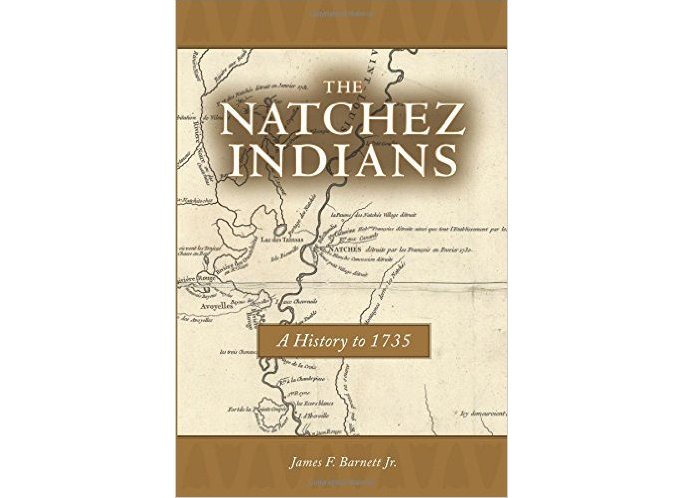Emerald Mound In The Ancient City Of Natchez: Second Largest Temple Mound In North America
Ellen Lloyd - AncientPages.com - In the ancient city of Natchez, Mississippi we encounter the Emerald Mound. It is the second-largest temple mound in North America and it was built by prehistoric Natchez Indians of the Lower Mississippi River Valley.
The Natchez Indian culture began as early as A.D. 700 and lasted until the 1730s when the tribe was dispersed in a war with the French. When the Frenchmen reached the area where the Natchez had created their homes, they noticed that each of Natches’ villages had a mound and the most significant of them all was the Emerald Mound.
Who Were The Natchez Indians?
The Natchez were Native Americans who originally lived in the Natchez Bluffs area, near the present-day city of Natchez, Mississippi. The name may originate from the people’s main village, Naches, meaning “Great (or Grand) Village.” Later as the tribe increased in size, the name was extended and included people living in other villages, as well as people captured or conquered by the Natchez.
Aerial view of the Emerald, one of the largest mounds in North America. Credit: National Park Service
The ancestors of the Natchez were the Mound Builders. The Natchez were skilled artists, farmers, and traders who developed a unique culture. They were a rather peaceful tribe in general, but of course occasionally they too were involved in quarrels or wars with their neighbors.
The Natchez Had A Strict Class System
The Natchez had a matrilineal society and strict class system. The upper class consisted of “Suns,” nobles, and esteemed people. The commoners, or michmichgupi, made up the labor force.
The leadership passed from the chief, named "Great Sun", to his sister's son which ensured the chiefdom stayed within one clan. Their leader was in charge of all political as well as religious matters.
The Natchez Creation Story
Like all other Native American tribes, the Natchez creation story is based on the Great Spirit that according to the tribe’s beliefs is infinite.
With help of some little spirits, the Infinite Spirit created all good things on our planet and in the entire Universe. Some of the little spirits were evil and the Infinite Spirit tied up their leader so he could not harm other living beings.
The Natchez believed that prayer could invoke good spirits and prevent the evil ones from causing trouble.
The first man and woman were made of clay and they created by the Infinite Spirit.
Religious Rituals Of The Natchez And Their Chief Great Sun
The Natchez were sun worshippers and the Great Sun, the hereditary chief of the Natchez, was the ceremonial leader was regarded as a divine being.
The Great Sun held daily rituals in the sacred temples. He was responsible for always keeping the fire in the temple burning. No ordinary people were allowed to enter a temple, but they could leave offerings outside. The Great Sun dressed in rich clothes and was carried from place to place so his feet would never touch the ground. Only certain people were permitted into his presence, and they had to follow strict rules when approaching him.
Artistic impression of the locations of the 8 secondary mounds. Credit: Wikipedia
The Natchez practiced human sacrifice. Upon the death of a chief, those people who had served the chief in life were expected to continue to serve him in death. Members of the Great Sun’s court were killed during his funeral so that they could accompany him into the next life.
What Happened When The French Encountered The Natchez
The encounter with the French had a very unfortunate outcome for the Natchez.
It hasn’t been possible to determine the size of the Natchez tribe, but when the French arrived in the late 1600s, the Natchez had nine villages along the Mississippi River around St. Catherine’s Creek, as well as East and South of present-day Natchez, Mississippi. French priests had had no success in gaining converts among the Natchez, whose religious beliefs were strongly integrated into their social system.
The Natchez Indians: A History to 1735 is the story of the Natchez Indians as revealed through accounts of Spanish, English, and French explorers, missionaries, soldiers, and colonists, and in the archaeological record. Because of their strategic location on the Mississippi River, the Natchez Indians played a crucial part in the European struggle for control of the Lower Mississippi Valley. The book begins with the brief confrontation between the Hernando de Soto expedition and the powerful Quigualtam chiefdom, presumed ancestors of the Natchez. In the late seventeenth century, René-Robert Cavelier de La Salle’s expedition met the Natchez and initiated sustained European encroachment, exposing the tribe to sickness and the dangers of the Indian slave trade.
The Natchez Indians portray the way that the Natchez coped with a rapidly changing world, became entangled with the political ambitions of two European superpowers, France and England, and eventually disappeared as a people. The author examines the shifting relationships among the tribe’s settlement districts and the settlement districts’ relationships with neighboring tribes and with the Europeans. The establishment of a French fort and burgeoning agricultural colony in their midst signaled the beginning of the end for the Natchez people. Barnett has written the most complete and detailed history of the Natchez to date. Read more
There was a lot of disagreement among the Natchez. Some of the villages were in favor of the arrival of the Europeans, others were not. The Natchez even executed six of their own war chiefs and three other people and sent their heads to the French governor. Relations were peaceful for some years, but when the Great Sun died the situation between the Natchez and French worsened.
The Natchez Indians attack the French. Credit: Legends Of America
Historians estimate the Natchez numbered about 6,000, and were able to put from 1,000 to 1,200 warriors in the field. The Natchez engaged in three wars with the French, in 1716, 1722, and 1729. The last war was devastating and led to the end of the Natchez tribe. Some of the few surviving Natchez joined the Cherokee.
The Sacred Mounds Of The Natchez
The Natchez constructed several sacred mounds that served for burial and other purposes and often surrounded their towns with ditches and fortified walls.
There was a mound in each and one of their nine villages. The main mound was Emerald Mound. Grand Village had three mounds and these were the Great Sun’s Mound, the Temple Mound, and the Abandoned Mound.
A reconstructed Natchez Indian house. Credit: Natchez Trace Travel
The Emerald Mound was most significant based on archaeological evidence it is believed its construction started in around 1250 A.D.
With a nearly pyramidal form to a flat-topped surface, the Emerald Mound covers almost 8 acres. Atop the main mound, the Natchez built a series of smaller mounds to create a unique ceremonial complex. It is thought that the larger of these smaller or secondary mounds likely was the base for
the complex temple. The smaller ones were likely platforms upon which were built the homes of various chiefs and key leaders.
The mounds have long stood abandoned and unexplored. It was first in the 1830s that researchers began to seriously investigate the site.
There are still many things we do not know about the customs, traditions, and religious beliefs of the Natchez, but further archaeological research can shed more light on the tribe’s ancient history and culture.
Written by Ellen Lloyd – AncientPages.com
Copyright © AncientPages.com & Ellen Lloyd All rights reserved. This material may not be published, broadcast, rewritten or redistributed in whole or part without the express written permission of AncientPages.com and Ellen Lloyd
About the author:
Ellen Lloyd – is the owner of AncientPages.com and an author who has spent decades researching ancient mysteries, myths, legends and sacred texts, but she is also very interested in astronomy, astrobiology and science in general
More From Ancient Pages
-
 Mysterious Ancient Human ‘Ghost’ Species Discovered With Help Of Saliva
Archaeology | Jul 25, 2017
Mysterious Ancient Human ‘Ghost’ Species Discovered With Help Of Saliva
Archaeology | Jul 25, 2017 -
 Silap Inua (Sila): Universal Deity That Controls Life Force Of All Living Things In Inuit Beliefs
Featured Stories | May 22, 2024
Silap Inua (Sila): Universal Deity That Controls Life Force Of All Living Things In Inuit Beliefs
Featured Stories | May 22, 2024 -
 On This Day In History: Battle Of Lissa Took Place In The Adriatic Sea – On July 20, 1866
News | Jul 20, 2016
On This Day In History: Battle Of Lissa Took Place In The Adriatic Sea – On July 20, 1866
News | Jul 20, 2016 -
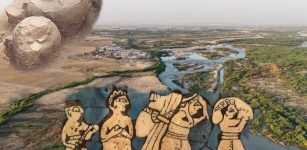 Artifacts From Shakhi Kora Reveal The Rejection Of Early Centralized Governance In Ancient Mesopotamia
Archaeology | Dec 9, 2024
Artifacts From Shakhi Kora Reveal The Rejection Of Early Centralized Governance In Ancient Mesopotamia
Archaeology | Dec 9, 2024 -
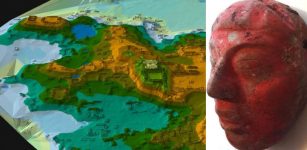 Ancient Tomb Of Maya Ruler Te’ Chan Ahk Discovered In Guatemala
News | Sep 14, 2017
Ancient Tomb Of Maya Ruler Te’ Chan Ahk Discovered In Guatemala
News | Sep 14, 2017 -
 Strange 1,000-Year-Old Artifact Melted Out Of The Ice Identified With Help Of Photo!
Archaeology | Jan 31, 2023
Strange 1,000-Year-Old Artifact Melted Out Of The Ice Identified With Help Of Photo!
Archaeology | Jan 31, 2023 -
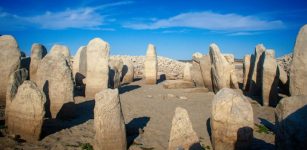 Stunning Spanish Stonehenge Built By The Celts Revealed By Drought
Archaeology | Aug 27, 2019
Stunning Spanish Stonehenge Built By The Celts Revealed By Drought
Archaeology | Aug 27, 2019 -
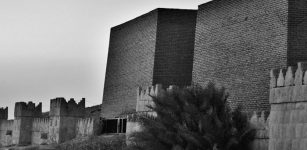 Biblical Jonah Visits Nineveh – The Evil City
Biblical Mysteries | Nov 9, 2018
Biblical Jonah Visits Nineveh – The Evil City
Biblical Mysteries | Nov 9, 2018 -
 Sacred And Mysterious Lake Titicaca Still Holds Many Ancient Secrets
Featured Stories | Jul 13, 2017
Sacred And Mysterious Lake Titicaca Still Holds Many Ancient Secrets
Featured Stories | Jul 13, 2017 -
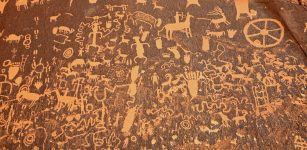 Newspaper Rock Art: Ancient Indian Petroglyphs Tell 2,000-Year-Old Story Of Utah
Civilizations | Nov 28, 2018
Newspaper Rock Art: Ancient Indian Petroglyphs Tell 2,000-Year-Old Story Of Utah
Civilizations | Nov 28, 2018 -
 Pomegranate-Liked Seeds Found In Ancient Tomb Dated To Han Dynasty
Archaeology | Feb 22, 2017
Pomegranate-Liked Seeds Found In Ancient Tomb Dated To Han Dynasty
Archaeology | Feb 22, 2017 -
 Siege Of Alesia: Last Decisive Battle That Ended Gallic Independence In France And Belgium
Featured Stories | Feb 1, 2017
Siege Of Alesia: Last Decisive Battle That Ended Gallic Independence In France And Belgium
Featured Stories | Feb 1, 2017 -
 Has The Viking Ship Burial Of King Bjørn Farmann Been Found At Jarlsberg Manor, Norway?
Archaeology | Jul 2, 2024
Has The Viking Ship Burial Of King Bjørn Farmann Been Found At Jarlsberg Manor, Norway?
Archaeology | Jul 2, 2024 -
 10 Ancient Shipwrecks And Several Underwater Artifacts Found Around The Island Of Kasos
Archaeology | Mar 14, 2024
10 Ancient Shipwrecks And Several Underwater Artifacts Found Around The Island Of Kasos
Archaeology | Mar 14, 2024 -
 Ancient Humans: Clarifying The Co-Existence Between Modern Humans And Neanderthals
Archaeology | Oct 13, 2022
Ancient Humans: Clarifying The Co-Existence Between Modern Humans And Neanderthals
Archaeology | Oct 13, 2022 -
 Athena – Goddess Of Wisdom Delivered Punishments And Gifts
Featured Stories | Dec 31, 2018
Athena – Goddess Of Wisdom Delivered Punishments And Gifts
Featured Stories | Dec 31, 2018 -
 Tracing Footsteps Of Giants In Africa – Obscure Past Of Mzoura Stones
Civilizations | Oct 18, 2015
Tracing Footsteps Of Giants In Africa – Obscure Past Of Mzoura Stones
Civilizations | Oct 18, 2015 -
 Return Of Pahana – The Lost White Brother Of The Hopi And The Sacred Tablet
Myths & Legends | Mar 5, 2018
Return Of Pahana – The Lost White Brother Of The Hopi And The Sacred Tablet
Myths & Legends | Mar 5, 2018 -
 What Can Ancient Toilets Teach Us About Maya Life And Tamales?
Archaeology | Jun 9, 2022
What Can Ancient Toilets Teach Us About Maya Life And Tamales?
Archaeology | Jun 9, 2022 -
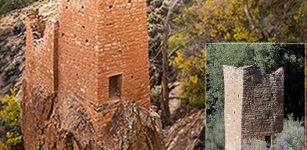 Ancient Ruins Of Hovenweep: Impressive Puebloan Masonry
Civilizations | Mar 15, 2016
Ancient Ruins Of Hovenweep: Impressive Puebloan Masonry
Civilizations | Mar 15, 2016



